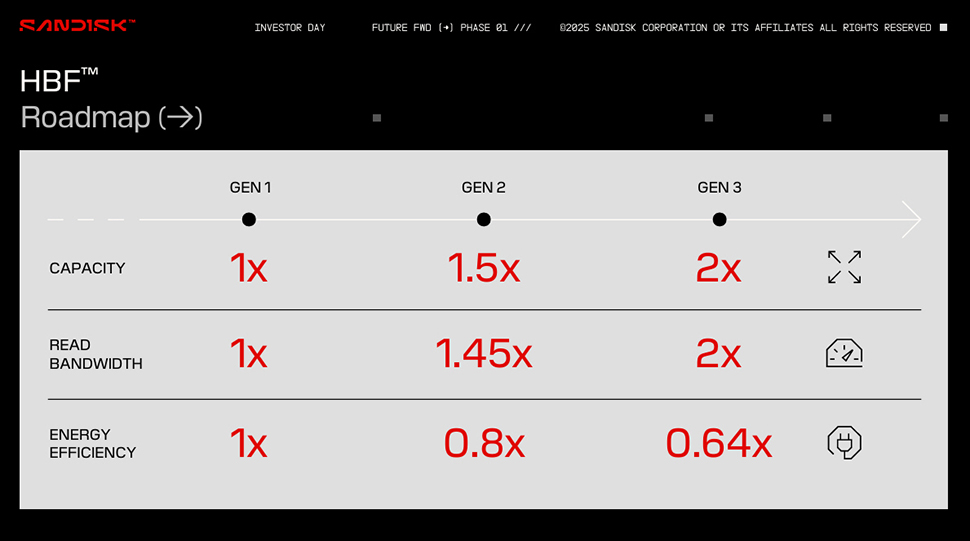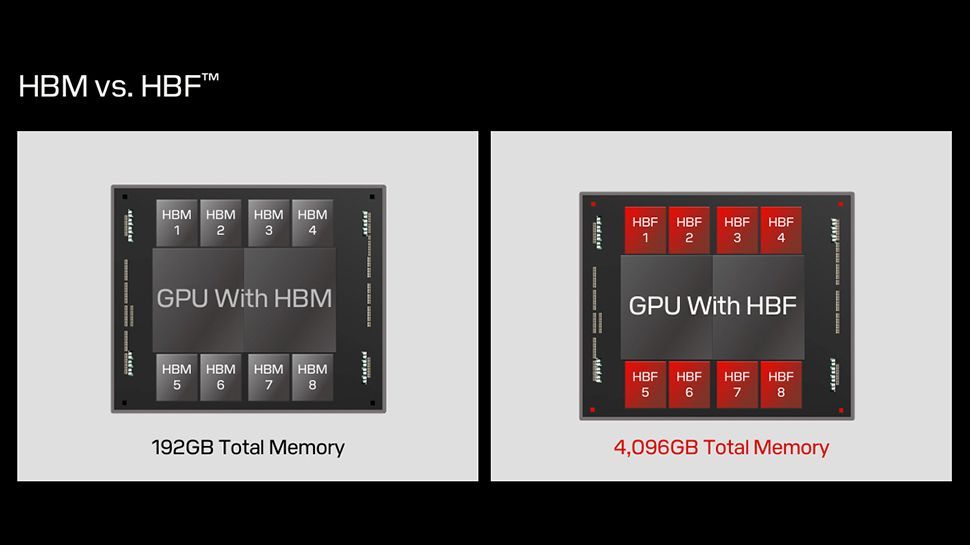- Sandisk presents high bandwidth flash (HBF), an alternative based on Nand to HBM
- HBF coincides with the HBM bandwidth, which offers 8–16x capacity at a lower cost
- Sandisk plans to establish a technical advisory board of experts in the industry
It certainly seems to separate from Western Digital has lit a low Sandisk heat. On his recent investors day, the Flash memory specialist looks at the wrapping of super great SSD, with the promise that the greatest come, and announced a new cheaper dram alternative called Matrix of 3D memory.
In the same event, Sandisk also announced its concept of high bandwidth (HBF) that points to HBM by increasing it with Nand Flash to satisfy the inference workloads of AI. Sandisk's key objectives with HBF seems to coincide with the HBM bandwidth, while providing 8-16 times the capacity at a similar cost.
According to a slide that Sandisk shared, HBF combines BICS technology with the union of CBA wafers, allowing an efficient stacking of high density. The company has developed a patented stacking technology that, according to reports, offers a deformation of ultra -low Die, which makes it possible to achieve an stack of 16 died without important structural problems.
Climbing up to 4TB
HBF's architecture has developed during the past year, with Sandisk incorporating contributions from “main AI players” (it does not name, unfortunately).
The diagram on the slide shows an HBF battery, which consists of multiple HBF nucleus connected through TSV (through silicon through) and micro coup, which interact with a logical die and phy, which is then connected To a GPU, CPU, TPU, or TPU or SOC dies. The entire battery is located on an integer on a package substrate, similar to the packaging design used in HBM.
HBF is not a straight replacement for HBM, but it shares the same electrical interface, so it will only require minor protocol settings, according to Sandisk.
On another slide, a HBM GPU that provides 192 GB of total memory, compares with an alternative version that combines HBF and HBM that increases the 3TB memory capacity. A fully optimized configuration with only HBF (which can be seen at the top of the page) can climb to an impressive 4TB.
Sandisk's HBF road map (below) shows how the company sees that technology advances in multiple generations, focusing on capacity, reading bandwidth and energy efficiency. In the first generation, HBF establishes a baseline for these metrics. For the second generation, the capacity is expected to increase by 1.5x, while Read Width will see an improvement of 1.45x, and energy efficiency decreases slightly to 0.8x. For the third generation (there are no indications of when Sandisk hopes to reach this point), it is projected that HBF doubles the capacity and reads the bandwidth compared to its initial version, with an energy efficiency that falls more to 0.64x.
HBF is likely to receive some rivals withdrawals such as Samsung and SK Hynix, which are strongly invested in the market of $ 100 billion HBM. Painally aware of this, Sandisk is looking to establish an open standard ecosystem and also a technical advisory board composed of experts from the industry and key partners.










